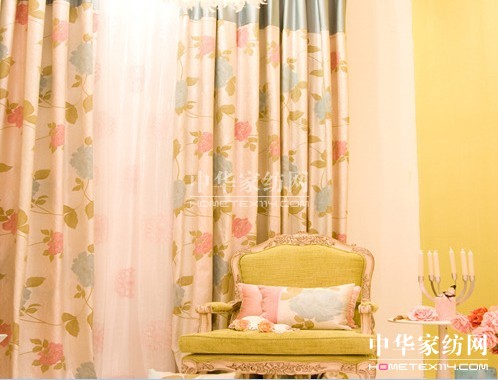Title: The Evolution of Comfort: From Silk Quilts to Down Comforters
The quest for comfort has been a driving force in human history, leading to the evolution of various bedding materials. From ancient times when silk quilts were considered luxurious and exclusive, to the modern era of down comforters that offer unparalleled warmth and convenience, the world of bedding has come a long way. The development of technology and innovation has played a significant role in shaping this evolution, with new materials being discovered and improved upon over time. Today, consumers have access to an array of options, including synthetic fibers like polyester and acrylic, as well as natural fibers like cotton and wool. Each material offers its own unique benefits and drawbacks, and choosing the right one depends on individual preferences and needs. Despite the many changes that have taken place, the fundamental goal of bedding remains the same: to provide a cozy and welcoming environment that promotes rest and relaxation. As we continue to evolve and adapt to new challenges and opportunities, it is likely that the world of bedding will continue to change and improve, providing us with even more comfortable options to choose from.
Introduction:

As the seasons change and temperatures shift, so do our sleeping needs. For centuries, people have sought out materials that can keep them warm and comfortable during the night. Two of the most enduring and popular options are silk quilts and down comforters. Each has its own unique properties and benefits, making them suitable for different types of sleepers and climates. In this article, we will explore the history and evolution of these two bedding options, as well as their features, pros, and cons.
The History of Silk Quilts:
Silk has been a valued commodity in China for over 5,000 years, and its use in bedding dates back at least that long. During the Tang Dynasty (618-907 AD), silk was considered the finest material for clothing and bedding due to its softness, warmth, and durability. However, it was not until the Song Dynasty (960-1279 AD) that silk quilts became popular among the wealthy classes.
During this period, silk was woven into intricate patterns and designs that reflected the elegance and sophistication of Chinese culture. These quilts were often made with high-quality silk yarns and filled with soft cotton or wool padding, making them both luxurious and comfortable. Over time, silk quilts spread throughout Asia and Europe, becoming symbols of wealth, status, and beauty.
The History of Down Comforters:
Down comforters, on the other hand, were invented in Europe in the 18th century. At the time, feathers were used to make insulation for homes, but they were not very effective due to their bulkiness and weight. In 1768, a French tailor named Jean-Baptiste Lebas de Maubert developed a new type of feather insulation that was lighter and more compact than previous versions. He called it "dove down" because it was made from the soft feathers of white doves.

Over the next few decades, down comforters evolved rapidly as people began to experiment with different filling materials and construction techniques. In the late 19th century, goose down became popular due to its superior warmth-to-weight ratio compared to other down alternatives. Today, there are many different types of down comforters available, including synthetic blends, microfiber fills, and natural fibers like wool or cashmere.
Features of Silk Quilts:
Silk quilts are known for their softness, smoothness, and moisture-wicking properties. Unlike synthetic fabrics like polyester or cotton, which can trap heat against the skin and cause sweat buildup, silk helps regulate body temperature by absorbing moisture and releasing it slowly throughout the night. This makes silk quilts ideal for hot summer nights or humid climates.
In addition to their thermal properties, silk quilts also offer a range of aesthetic benefits. They come in a variety of colors, patterns, and designs, from traditional Chinese motifs to modern geometric shapes. Some silk quilts even feature embedded stones or metals that shimmer in the light and add visual interest to the bedspread.
However, silk quilts are not without their drawbacks. They are more expensive than synthetic quilts, which can be a barrier for budget-conscious buyers. They are also less durable than other types of bedding, as they can easily tear or wear out over time. Finally, silk is a natural fiber that requires special care and attention when washing or handling.
Features of Down Comforters:

Down comforters offer several advantages over silk quilts when it comes to thermal properties and ease of care. They are much heavier than silk quilts, which means they can trap more heat against the body and provide additional insulation in cold weather. They also tend to be more durable than silk quilts, as they can withstand frequent washing and use without losing their shape or texture.
Another benefit of down comforters is their versatility. They can be made from a wide range of downfill options, including goose down, duck down, lamb down, or synthetic blends derived from natural fibers like cotton or wool. This means that there is a down comforter available to suit almost any sleeper preference or climate condition.
However, down comforters do have some drawbacks compared to silk quilts. They can be more noisy when moved around during sleep, especially if they contain loose fill particles or clumps of down. They may also require more frequent cleaning than other types of bedding due to their ability to accumulate dirt and allergens over time. Finally, while some down comforters are machine washable and dryer safe, others may require special care instructions or dry cleaning services.
Articles related to the knowledge points of this article:
High-priced poor-quality down comforter: what to do?
Is it good to use a down blanket on the bed?
Title: The Best Feather Comforters in China
Title: Worlds Top Down Comforter Brands for 2023: A Comprehensive Guide



